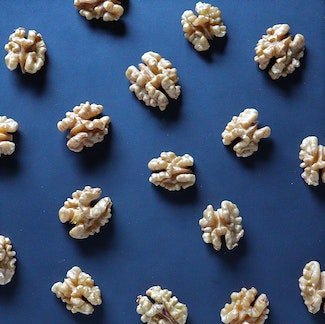
Let’s continue on our journey of how you can live more easily with ADHD! This week, we talk Omega-3 Fatty Acids and why they are essential in your diet if you have ADHD:
A. Scientists believe that ADHD is caused by a genetic deficiency of a neurotransmitter in your brain called dopamine.
B. To reduce the symptoms of ADHD, you want to increase the amount of dopamine in your brain so you can be more focused, motivated, pay attention, and follow through.
C. Scientists also believe Omega-3 fatty acids increase dopamine levels in the brain, therefore reducing ADHD symptoms.
A + B + C = ADHD Better Controlled!
And it’s just not basic math. In my experience as an ADHD coach, my clients who take Omega-3s consistently for a couple of months notice improvements in ADHD symptoms than not. They felt their brain switch turning on and staying on longer!
And two of my favorite ADHD doctors, Edward Hallowell and Daniel Amen recommend between 2000 to 4000 mg of Omega-3s a day to help manage ADHD as well. (Ask your doctor what’s right for you.)
The problem is many folks have a deficiency in Essential Fatty Acids because the typical American diet has become more highly processed over the past decades.
Supplements are the obvious choice for getting your Omega-3s. I don’t know about you, but even though I take supplements and vitamins every day, I prefer to get my nutrients from food when I can.
So how can you incorporate more Omega-3 fatty acids into your diet?
Seven Easy, Affordable Sources of Omega-3 Oils
- Canned Sockeye Salmon. A great source of Omega-3 oils and protein. Choose wild-caught Salmon; farm-raised salmon simply isn’t as healthful. Even when canned, Sockeye salmon is always wild-caught.
- Canned Sardines. High in Omega-3s and protein and so many other vitamins and minerals, eating sardines might just make you live forever. Canned sardines are pre-cleaned, cooked, and ready to eat.
- Walnuts. A good, vegetarian source of protein and Omega-3 essential fatty acids. You could use walnut oil, but why? Regular old walnuts are about as easy to use as you can get. Especially if you buy them shelled and chopped. Throw them in a salad, toss a handful in your mouth, add them to oatmeal. So good.
- Ground Flaxseed. Freshly ground flaxseeds are very healthy and contain both Omega-3s and soluble fiber. I buy flaxseeds in bulk in the health food section of my grocery store. To get the full benefit from flaxseeds, you need to freshly grind them before each use.
- Omega-3 Enriched Eggs. Available in the health food section of your grocery store, use these just like regular eggs. Apparently, the chickens are fed Omega-3 enriched foods which they pass along into their eggs. Generous of them, don’t you think?
- High Quality Omega-3 Supplements. Omega-3 supplements are available in liquid or capsule forms. Make sure what you take is certified free of mercury and contaminants. I take these NOW Foods Omega-3 capsules. They are molecularly distilled and tested to be free of mercury, contaminants or pesticides.
I eat all of these (except the Omega Eggs – can’t stand the disgusting fishy burps). But they have challenges.
Wild salmon is too expensive to eat often, the flax seeds require extra steps because they need to be fresh ground to be effective. The flax oil tastes nasty. Walnuts are wonderful but how much do you need to eat to get the recommended amount of Omega-3s?
- My favorite, really easy option is chia seeds. And here at ADD Success world headquarters, we’re all about easy. Easy = ADHD-friendly!
Chia seeds are tiny, tasteless seeds that pack a powerful nutritional punch into a very small serving. Adored by the ancient Mayans and Aztecs, a single tablespoon gives you 2.9 grams of Omega-3 fatty acid and a lot of fiber and protein, too.
In fact, chia is often considered the richest plant-based source of dietary fiber, protein, and Omega-3’s.
According to my sources, one tablespoon of chia seeds is about all you need to get enough to adjust that switch and help your ADHD symptoms.
Chia seeds are really easy to use. You can sprinkle them in yogurt, eggs, smoothies, salads, and baked goods. You will want to make sure you drink a full glass of water when you eat them…which is a double bonus of mitigating dehydration!
A diet rich in Omega-3s just might create a stable platform to help you live more easily with ADHD. They may even allow you to reduce the amount of ADHD medication you take. Remember A + B + C = ADHD Better Controlled!
I’d love to hear from you – what are your favorite ways and recipes for adding Omega-3’s to your diet?
Keep learning about how you live easier with ADHD:


 Tired of struggling with ADHD? You’re in the right place. ADHD Success is loaded with free, practical tips to help you get organized, manage your time, and live more easily with Adult ADHD. Like what you read? Sign up for the newsletter now! No Spam. I promise!
Tired of struggling with ADHD? You’re in the right place. ADHD Success is loaded with free, practical tips to help you get organized, manage your time, and live more easily with Adult ADHD. Like what you read? Sign up for the newsletter now! No Spam. I promise!
Hi Dana,
I eat walnuts, oatmeal, wild blueberries and chia pudding for breakfast most days.
I mix the chia pudding with yogurt and other things too.
It’s easy and fast to make if stirred with a fork into warmed fluid. I use half and half water and soy milk. By the time it feels like pudding it’s done.
Thanks for your coaching!
Hi Leslie! That’s close to what I have most mornings now, too. You’re welcome. Thanks!